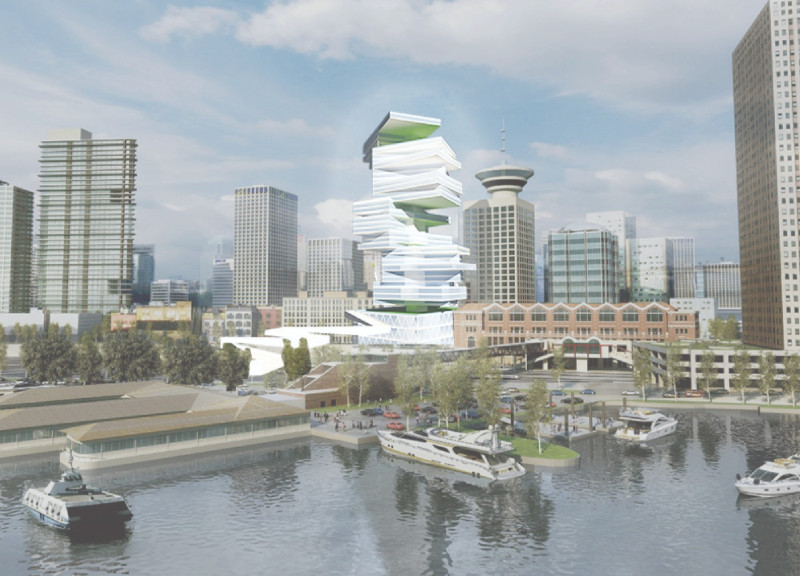5 key facts about this project
The unique form of LAMINA features twisting and wrapping floor plates around a central core, resulting in a visually distinct silhouette that not only adds character to the skyline but also fosters usable outdoor spaces at various levels. The layering technique allows varying heights and orientations of floor plates, which minimizes the typical uniformity of high-rise buildings and creates a more engaging living experience.
Design Approach and Differentiation
LAMINA stands out from other projects through its flexible spatial organization and emphasis on communal interaction. By providing public terraces and gardens throughout the building, LAMINA promotes social engagement among residents and visitors. The design prioritizes adaptable spaces, enabling them to accommodate various functions and user needs, reflecting the evolving demands of urban living. The tiered structure not only supports aesthetic variation but also enhances accessibility to natural light and views, reinforcing the connection between residents and the surrounding environment.
Architectural Elements and Materials
The architectural design incorporates a combination of materials that highlight transparency and environmental engagement. The use of glass for the facades creates a sense of lightness while allowing occupants to maintain visual connectivity with the outdoors. Steel forms the structural framework essential for the building's integrity, enabling the innovative twisting design. Concrete is strategically utilized within the core for added stability, while landscape elements integrate greenery into the vertical environment, creating biophilic connections for inhabitants.
LAMINA's approach to design exemplifies a commitment to sustainability by incorporating green roofs and landscaped terraces, which contribute to improved air quality and urban biodiversity. This integration of nature into the architectural framework not only enhances the aesthetic value but also addresses ecological concerns pertinent to urban settings.
Residents and the community will benefit from the project's thoughtful planning, which balances private and public spaces, allowing for a range of recreational activities and interactions. LAMINA serves as a model of modern urban architecture that recognizes the need for balance between built and natural environments.
To gain deeper insights into the architectural design, including the spatial organization and functional adaptability of the project, it is recommended to explore the architectural plans, architectural sections, and architectural ideas presented in detail.


























